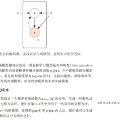Generators of space-time dynamics in bioimaging have become essential to build ground truth datasets for image processing algorithm evaluation such as biomolecule detectors and trackers, as well as to generate training datasets for deep learning algorithms. In this contribution, we leverage a stochastic model, called birth-death-move (BDM) point process, in order to generate joint dynamics of biomolecules in cells. This approach is very flexible and allows us to model a system of particles in motion, possibly in interaction, that can each possibly switch from a motion regime (e.g. Brownian) to another (e.g. a directed motion), along with the appearance over time of new trajectories and their death after some lifetime, all of these features possibly depending on the current spatial configuration of all existing particles. We explain how to specify all characteristics of a BDM model, with many practical examples that are relevant for bioimaging applications. Based on real fluorescence microscopy datasets, we finally calibrate our model to mimic the joint dynamics of Langerin and Rab11 proteins near the plasma membrane. We show that the resulting synthetic sequences exhibit comparable features as those observed in real microscopy image sequences.
翻译:生物成像中的空间- 时间动态生成器已经变得至关重要, 用于建立地面真实数据集, 用于图像处理算法评估, 如生物分子探测器和跟踪器等, 以及生成用于深层学习算法的培训数据集。 在这一贡献中, 我们利用一个随机模型, 称为出生- 死亡移动( BDM) 点进程, 以在细胞中生成生物分子的联合动态。 这个方法非常灵活, 使我们能够模拟一个在移动中的粒子系统, 可能的话在互动中, 每一个系统都可以从运动系统( 如布朗尼) 转换为另一个( 如定向运动), 以及新轨迹的出现和一些寿命后死亡。 所有这些功能都可能取决于所有现有粒子的当前空间配置。 我们解释如何指定生物成像模型的所有特性, 以及许多与生物成像应用相关的实际实例。 基于真实的荧光显微镜数据集, 我们最后校准了我们的模型, 以模拟Langerin 和 Rab11 的组合动态动态, 并展示了近时间的合成序列图像。</s>





